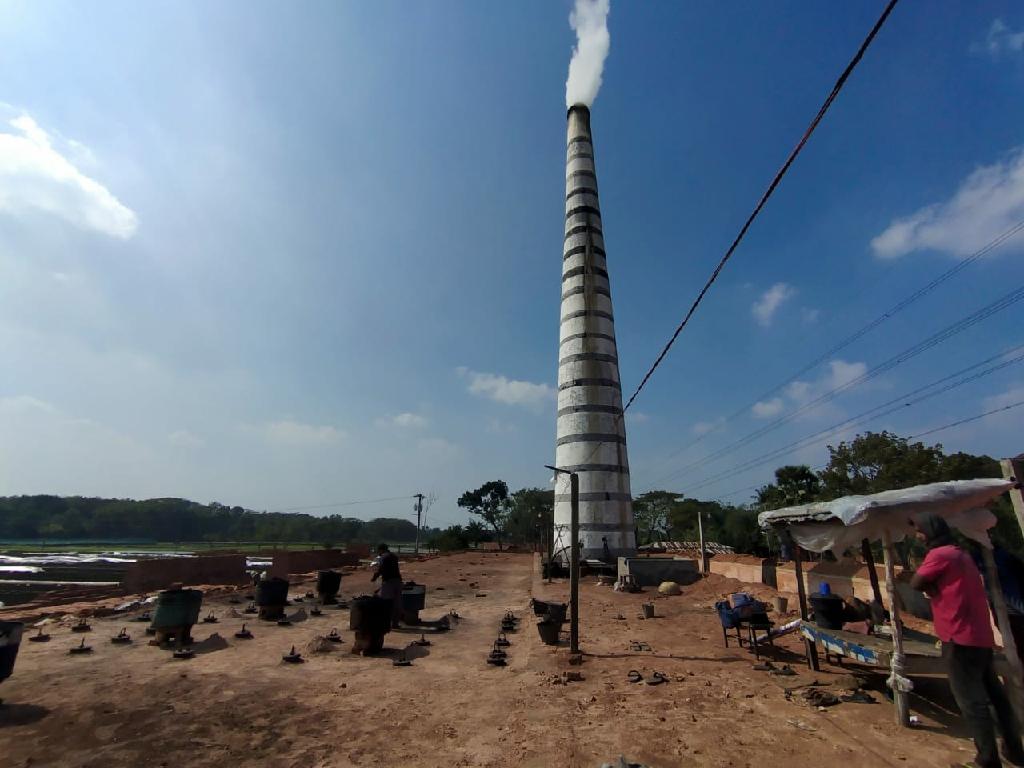Improving Brick Manufacturing in Bangladesh to Promote Clean Air and Better Health
- Small and medium enterprises
Bangladesh is the nation with the highest air pollution in the world, and traditional brick kilns generate eleven percent of its PM2.5 and seventeen percent of its carbon dioxide (CO2) emissions. Pollution from brick kilns causes approximately 6,000 premature adult deaths annually in Bangladesh. Researchers evaluated if a training campaign for owners and operators of brick manufacturing kilns could reduce air pollution, CO2 emissions, and fuel expenses, and whether increasing attention to worker incentives resulted in further reductions. Results forthcoming.
Policy issue
Traditional brick kilns emit CO2, produce particulate matter air pollution, and use large, costly amounts of coal for small kiln owners in Bangladesh. In fact, Bangladesh is the nation with the highest air pollution in the world.1 Reducing air pollution can improve local air quality, health outcomes, and agricultural productivity. Eleven percent of particulate matter pollution with a diameter of less than 2.5 microns (PM2.5), which is particularly dangerous because these microscopic particles are absorbed deep into the lungs and are associated with cardiovascular and respiratory disease and mortality,2 and seventeen percent of CO2 emissions are generated by traditional brick kilns in Bangladesh. Seventy percent of brick manufacturers in Bangladesh use zigzag kilns, which emit less CO2 and particulate matter and use less coal, meaning lower costs, than traditional kilns when properly constructed and operated; however, the vast majority are incorrectly constructed or operated. Does training kiln owners to operate and construct kilns correctly decrease pollution and increase profits?
Context of the evaluation
Pollution from brick kilns causes approximately 6,000 premature adult deaths annually in Bangladesh. Many kilns are located near large population centers, exposing large numbers of people to pollution and increasing its morbidity and mortality impacts.3 The government of Bangladesh placed strict regulations on traditional brick kilns beginning in 1989; however, these regulations have been loosely enforced.4 The government has been encouraging manufacturers to switch to zigzag kilns since 2013 as a way to reduce pollution from brick manufacturing, but many zigzag kilns are not constructed or maintained correctly. Many kiln owners are reluctant to alter the way they manage their kilns because they have no way to make sure that workers are maintaining them correctly.

Details of the intervention
Researchers partnered with the International Center for Diarrhoeal Disease Research, Bangladesh (icddr,b), the Bangladesh University of Engineering and Technology (BUET), and BBMOA to conduct a randomized evaluation testing the impact of training kiln owners and encouraging them to incentivize workers on kiln productivity, pollution, and CO2 emissions. Initially, researchers identified 357 kilns for the evaluation, but kilns that had decided to burn firewood exclusively (as opposed to coal), decided not to operate during the season of research, or refused to participate were excluded, which left 294 eligible kilns. Kilns were randomly assigned to one of three groups:
- Technical knowledge and training (97 kilns): In this group, kiln owners received information, training, and encouragement to adopt a set of technical and operational changes in a classroom setting. Labor supervisors and workers received technical training on-site. Owners and workers received additional technical support throughout the brick firing season.
- Technical knowledge and training, plus incentives (102 kilns): This group received the same resources as in the technical knowledge and training group, but kiln owners also received additional information and encouragement to provide workers with incentives, such as higher wages or better working conditions, to encourage workers to adopt the new technical practices. The research team also followed up with two later visits to remind kiln owners of the incentives’ importance.
- Comparison group (97 kilns): ): In this group, kilns did not receive training or encouragement.
Researchers piloted the interventions during the 2021 brick firing season (between November 2021 and May 2022), before launching the full evaluation during the 2022 firing season (November 2022 to May 2023). Researchers assessed the kilns’ performance at the end of the firing season, between March and May 2023, during which time they measured the amount of coal the kilns consumed, the amount and quality of bricks produced, and the particulate matter, CO, and CO2 emissions from the kilns.
Brick manufacturing in the informal sector across South Asia characteristically engages and commonly exploits impoverished workers. There is a risk that by improving the operations of these kilns the researchers could be complicit in this exploitation and risk expanding these businesses and the number of people whom they exploit. Researchers were engaged by the primary research team to focus on efforts to monitor and improve workers’ conditions as part of this larger effort.
Results and policy lessons
Research ongoing; results forthcoming.

